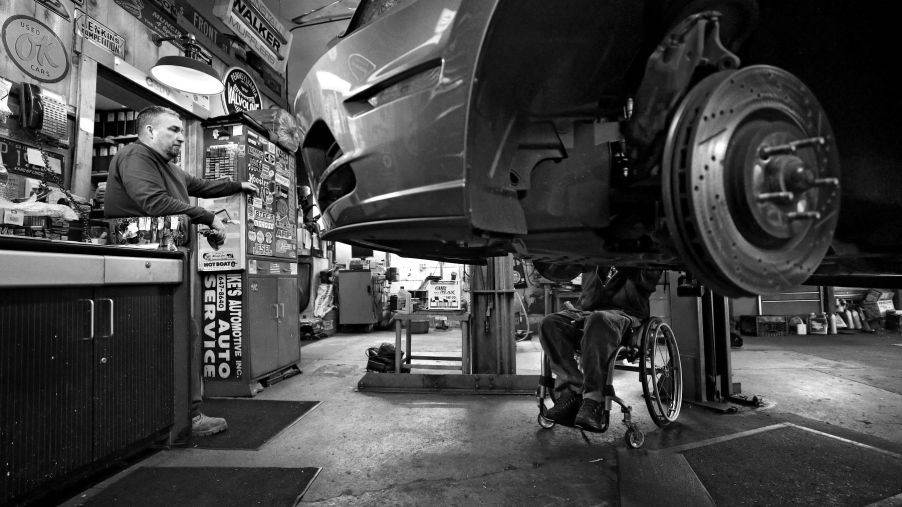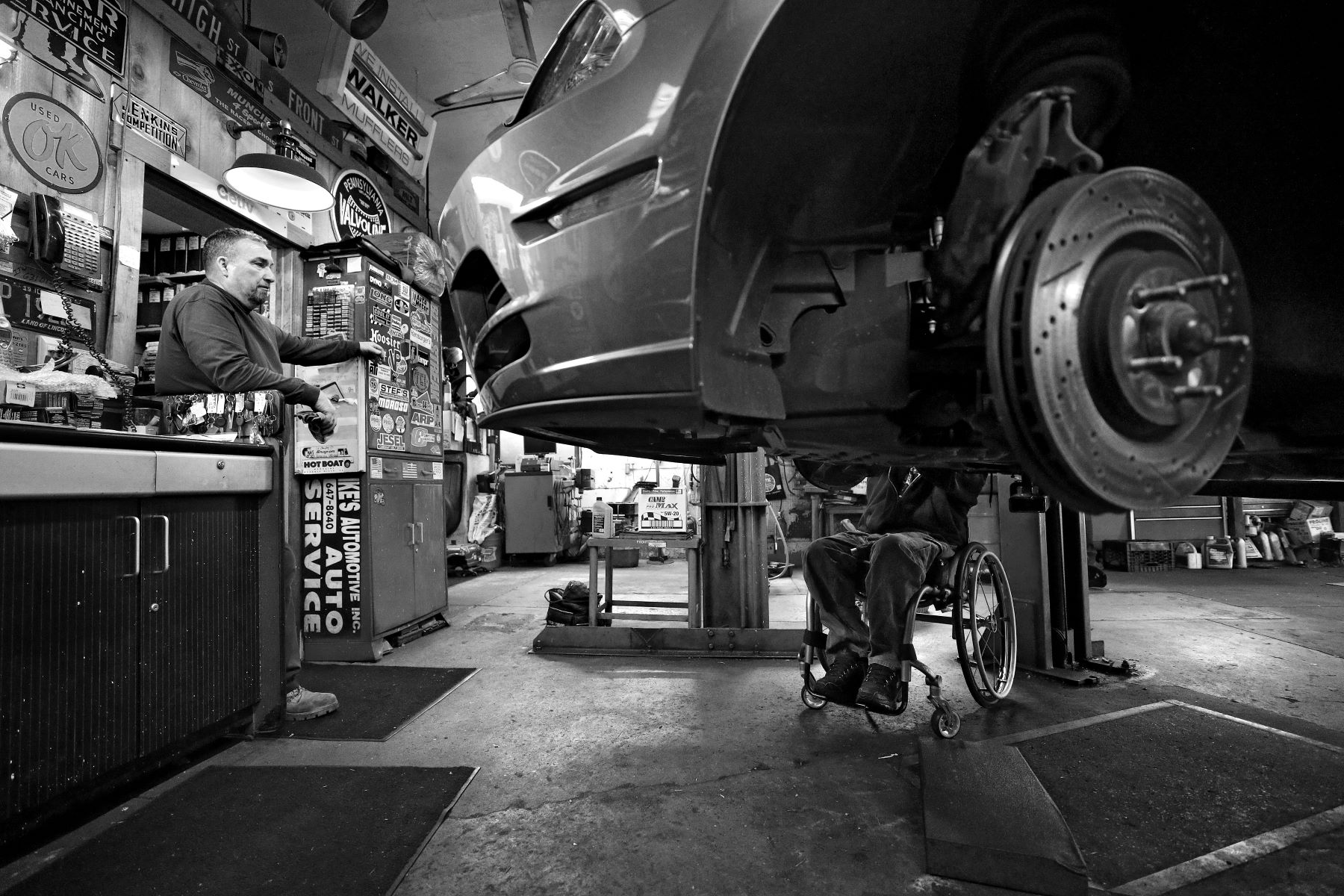
What Is the Cost of Replacing Brake Pads and Rotors?
With fuel costs rising sky-high, it’s natural to wonder if other aspects of car ownership are going up. No matter what, this is not the time to defer maintenance. Doing so can lead to expensive repairs in the not-so-distant future. What is the cost of replacing brake pads and rotors? Here’s what we know:
How much do new brake pads and rotors cost?

The easy answer is that it depends. The make and model of your vehicle, as well as your location and braking habits, have a lot to do with how much it costs for a brake job. Typically, brakes, rotors, and labor prices are higher for European performance cars such as BMW, Jaguar, and Audi models than affordable commuter cars. OEM parts generally cost more than aftermarket parts, too.
Each axle comprises four pads that press on either side of a metallic rotor disc. Typically, the price for four brake pads is between $20 and $100, with labor costs hovering around $70 to $130 per axle, explains AutoChimps. Rotors, which generally cost around $40 to $90 each, take a bit longer to install, so you can expect to pay between $100 and $150 in labor costs.
Replacing rotors and pads at the same time is recommended and brings the price down substantially. Although the bottom line is influenced by car brand and model, the cost of replacing rotors and brakes together averages out to $250 to $430 per axle, parts, and labor included.
Best maintenance practices such as regularly replacing the brake fluid can go a long way toward extending the life of your brakes. Fluid replacement can cost between $100 and $250. If you haven’t changed the brake fluid in years, it will be necessary to do so when you have your rotors and pads replaced, explains iSeeCars.
Do brake pads and rotors have to be replaced at the same time?
Brakes are a crucial component of any vehicle, and they are designed to wear out. This may seem counter-intuitive to safety, but the brake pad that comes into contact with the rotor is made of friction material that is consumed bit by bit over time.
Old-school brakes comprised wear-away pads that were made of asbestos. That dangerous stuff was outlawed in the 1970s. Today’s modern pads are made with organic material, mixed metals, or ceramic, explains Goodyear Brakes.
If you change only the pads, chances are good that the rotors will require replacement before the new pads wear out, effectively doubling the time your car spends in the shop. According to iSeeCars, there are several reasons to change pads and rotors together.
Rotors that have been grooved during service may squeak horribly when new pads are installed. Although the pads lose more material over time than rotors, the rotors become thinner with use. The reduction in mass can lead to warpage and excessive vibration, both of which are known to reduce braking efficiency. Changing pads and rotors simultaneously is important, and many mechanics won’t do a brake job halfway.
How to save money on a pads-and-rotors brake job
Instead of buying parts from your mechanic, buy your own and bring them to the shop for installation. Not all shops will comply, but if they agree, this kind of labor-only brake job can save you a bundle, says Spend On Auto. You may lose out on any parts warranty, although the shop will probably cover their workmanship.
Additionally, if you have the right skills and tools, you may be able to replace your pads and rotors by yourself. You will need a floor jack, a lug nut wrench, an assortment of pliers and screwdrivers, and the right size pads and rotors to fit your vehicle. Several online sites, including Instructables, offer step-by-step instructions that are easy to follow.
Whatever you do, don’t delay a necessary brake job. At the very least, you could damage your braking system. At worst, you’ll be putting yourself and your passengers at risk.


